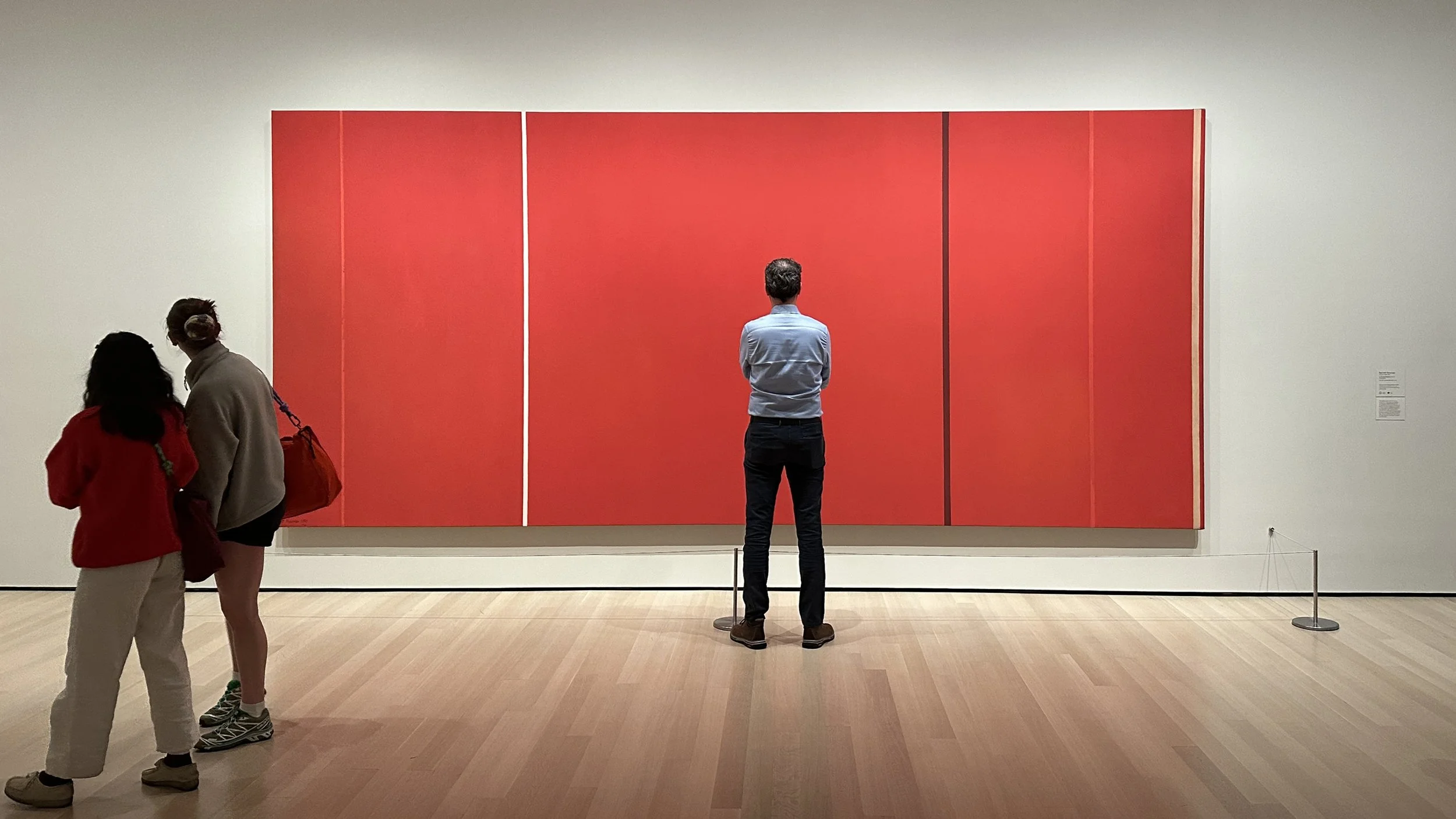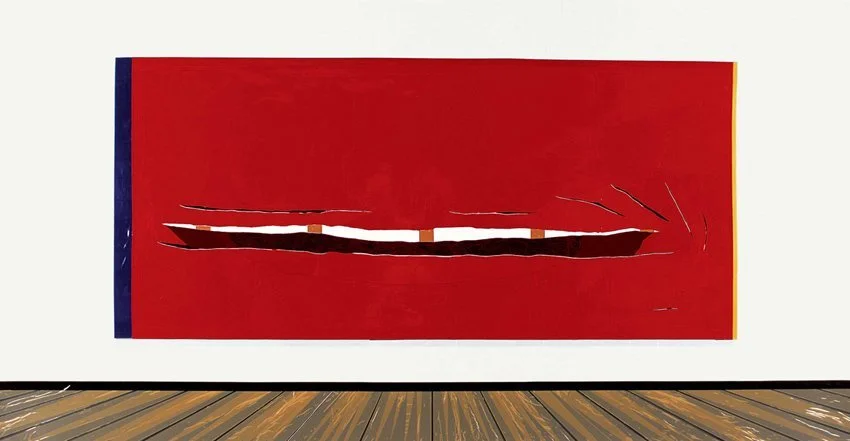A couple of weekends ago I went to see Barnett Newman's Vir Heroicus Sublimus (Man, heroic and Sublime, 1950-51) at the Metropolitan Museum of Art. The great thing about the Met is that they treat this gallery like any other gallery in the museum. You find works by mid-century masters like Franz Kline, Helen Frankenthaler, Mark Rothko, Clifford Still, and others. There are none of the distractions of MoMa or the Whitney, with multi-media events and temporary installations.
Barnett's painting is 7' 11 3/8" x 17' 9 1/4" and mostly red, with three vertical strips that Barnett called "zips" that break or alter the field depending on your point of view. When you are within a few feet of this painting, you can no longer see where it begins or ends, and are simply gazing into its limitlessness. Though red, you no longer perceive it as a color but as a shifting and unfathomable depth.
One of the things Barnett had in common with his colleagues was to resist the color-field definition in favor of a larger objective. He believed that art should be an encounter with the sublime, offering viewers a space for introspection and a sense of connection to a broader human experience. It was anthropomorphic, humanistic, as in two people meeting for the first time, intimate yet mysterious, familiar but new.
The painting was prepared in layers, on unprimed canvas, first with a stain of Cadmium Orange. You can see this revealed in the second zip on the left. There was a subsequent layer of Alizarin or a similar cool red, with a result that feels both warm and cool, like swimming in a pond. Cool violets seem to float within, a violet seen in the zip three-quarters of the way down on the right. The whole experience is completely subjective.
Interestingly, Barnett was the only contemporary painter to have his work attacked and vandalized. The most notorious attack occurred in 1986 at the Stedelijk Museum in Amsterdam, where Gerard Jan van Bladeren slashed Who’s Afraid of Red, Yellow, and Blue III with a box cutter, resulting in fifty feet of cuts across the canvas.
Who's Afraid of Red, Yellow and Blue After the Attack III, 2006. Image from Mutual Art
The museum eventually enlisted the services of Daniel Goldreyer, an art conservator who claimed to have worked with Newman, and assured that he could faithfully restore the painting. Instead of selectively repairing the damaged areas, he repainted the entire surface with a roller. The result was a painting that was dead flat and lifeless. It was scandalous. A second vandalism, everybody cried. It was moved to the basement never to be seen again. Future vandalisms would be stitched back together with surgical sutures.
One of the reasons I'm drawn to this type of work is that it is physical and emotional, not an intellectual experience. All reason leaves you when you stand in front of it. And therein lies the pleasure---to be released from judgment, analytics, and explanation, and for a moment, to just be.


